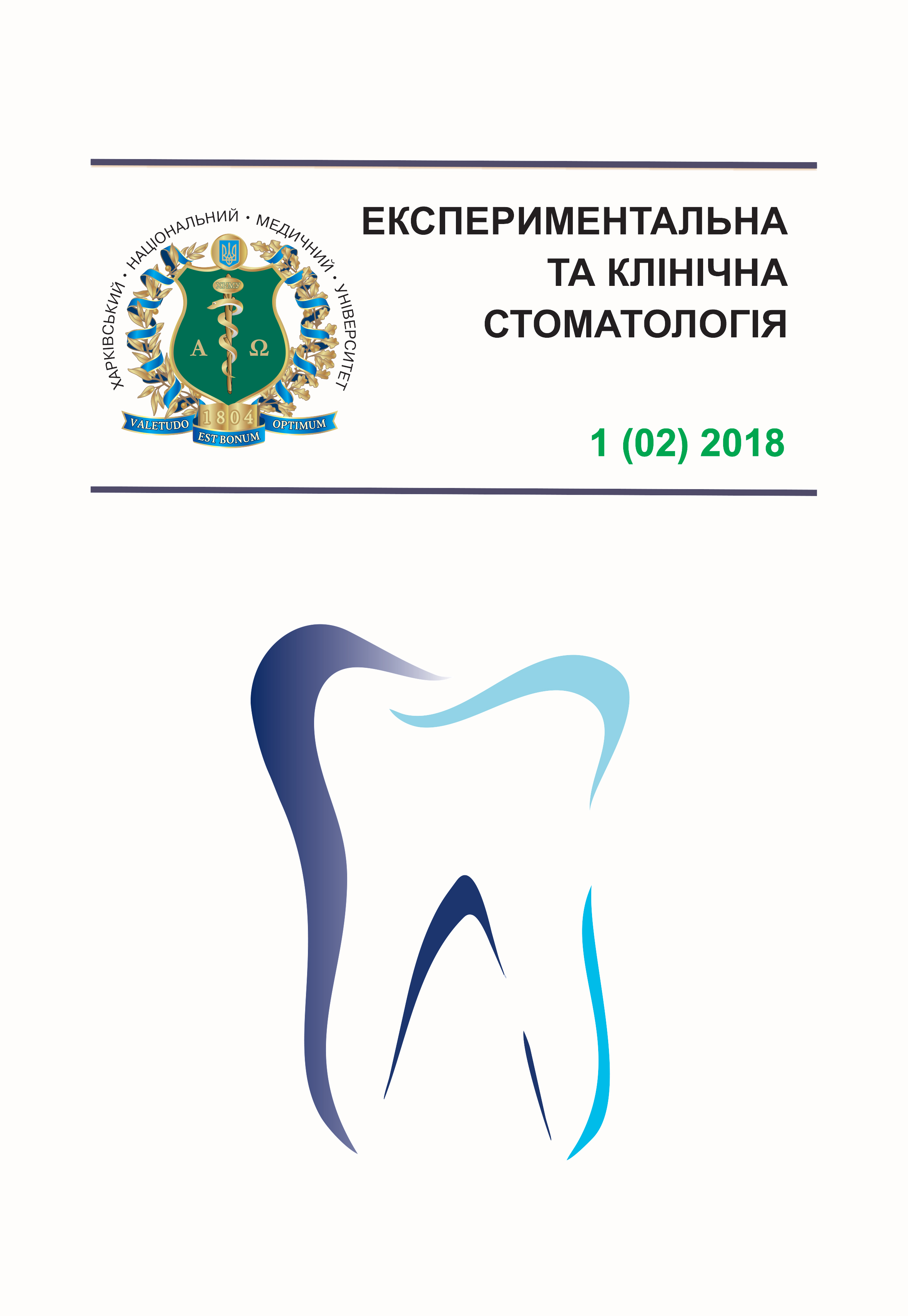Abstract
The article describes a clinical case of surgical treatment of bite wound of the upper lip by primary surgical treatment of the wound, the wound suturing with simultaneous use of plastic repair with local tissues. Peculiarities of the surgical treatment of bite wounds of this area, methods of complications’ prevention are discussed.
One of the causes of this type of injury is low culture of pets’ care, as well as increase of the number of homeless animals. Most injuries fall at the dog bites – 70–93 %, 3–15 % – at the cats’ bites, 1 % – wild animals. Dangerous areas for bites are: the head, face, neck, which constitute 51 % of bites, among them there are severe bites – 40.8 %. According to the sources, most injuries in the face and neck area are caused by stray dogs, according to other authors – by pets. Traumas of the face and neck are accompanied by soft or bone tissues’ injuries. The complexity of diagnosis and treatment of soft tissue injuries of the maxillofacial area are mainly associated with anatomical and topographic peculiarity of the face and a high probability of complications. Considering advances in diagnosis and treatment of maxillofacial area injuries, this problem is still topical. It is important to examine these patients and to help them taking into account peculiarities of the wound location.
Clinical examination involves identifying the symmetry or asymmetry of the face, the location of the wound, the volume and presence of bleeding, tissues of the wound walls (muscles, subcutaneous fat) and their state, the presence of exposed bone, ratio to physiological cavities (cavities of the mouth, nose, eye socket), signs of inflammation, necrosis. Important peculiarities of the facial bite wounds are aesthetic disorders, dysfunction of chewing, swallowing, speech, and the presence of teeth. Bite wounds have jagged, broken-ragged edges, defects of the tissues and flap fragments.
X-ray examination can detect the peculiarities of facial bones’ injuries, the direction of fragments’ displacement, evaluate the effectiveness of methods for fixing the fracture site, and timely detect complications. In ultrasound examination the liquid formations are found – purulent cavities, hematomas. Use of computed tomography makes it possible to specify the location of the fracture in its presence, character of splinters’ displacement
The wound on the face is one of the most frustrating injuries that cannot cover with the clothes and to hide from prying eyes. They spoil the appearance, force to wear a bandage and threaten with the formation of scars in future, which may remain for whole life, creating a lot of inconveniences: discomfort and pain while smiling, communication, facial expressions, meals, etc. To prevent this, firstly one must visit a surgeon for the proper treatment of damaged site and to undergo a course of treatment. The cleverer care for the injured area, the sooner and without consequences the healing will take place. At the example of the clinical case of surgical wound treatment and simultaneous use of plastic repair with local tissues, we succeeded in restoration of the functions of speech, eating, and aesthetic appearance of the patient.
Surgical treatment of facial bite wounds despite the gained experience, the large number of antibacterial medicines, is important. As a matter of choice of surgical treatment tactics, postoperative care, prognosis and treatment of complications remain open.
Keywords: lips wound, plastic repair with local tissues, defect of the upper lip.
References
Яковлева Л.М. Укушенные раны: особенности клинического течения и хирургической тактики. автореферат диссертации канд. мед. наук / Л.М. Яковлева. – Саратов, 2005. – 24 с.
Kaye A.E. Pediatric dog bite injuries: a 5-year review of the experience at the Children’s Hospital of Philadelphia/ A.E. Kaye, J.M. Belz // Plast Reconstr Surg. – 2009. – No. 124. – P. 551.
Жуковський В.С. Кусані рани: епідеміологія та лікування / В.С. Жуковський // Ортопедия, травматология и протезирование. – 2015. – № 3. – С. 99–102.
Звездина М.И. Реовазография в определении Эффективности лечения при укушеной травме / М.И. Звездина // Врач. – 2009. – № 6. – С. 44–46.
Забелин А.С. Особенности лечения больных с укушенными ранами лица и шеи / А.С. Забелин // Российский стоматологический журнал. – 2005. – № 5. – С. 40–41.
Schalamon J.J. Analysis of dog bites in children who are younger than 17 years / J.J. Schalamon // Pediatric. – 2006. – No. 117. – P. 374–379.
Меллер Т.Б. Норма при КТ- и МРТ-исследованиях / Т.Б. Меллер, Э.А. Райф. – М.: Медпресс-информ, 2008. – 245 с.
Kesting M.R. Animal bite injuries to the head: 132 cases / M.R. Kesting, F. Holzle, C. Pox et al. // Br. J. Oral Maxillofac. Surg. – 2010. – 44 (5). – P. 235–239.
Урицкий А.Я. CO2 – лазер в комплексном лечении ран после укуса животными / А.Я. Урицкий // Анналы пластической хирургии. – 2012. – № 2. – С. 56–57.
Nabili V. Advanced lip reconstruction: functional and aesthetic considerations / V. Nabili, P.D. Knott // Facizl Plast. Surg. – 2008. – Vol. 24, No. 1. – P. 24–49.
Brown D.J. Advanced laceration management / D.J. Brown, J.E. Jaffe, J.K. Henson // Emerg. Med. Clin. North Am. – 2007. – Vol. 25, No. 1. – P. 83–99.
McCarn K.E. Lip reconstruction / K.E. McCarn, S.S. Park // Facial Plast. Surg. Clin North Am. – 2005. – Vol. 13, No. 2. – P. 301–314.
Marx J.A. Rosen’s Emergency medicine: concepts and clinical practice / J.A. Marx, R.S. Hockberger, R.M. Walls. – St Louis, Mo: Mosby, 2008. – P. 24–26.
Nabili V. Advanced lip reconstruction: functional and aesthetic considerations / V. Nabili, P.D. Knott // Facial Plast. Surg. – 2008. – Vol. 24, No. 1. – P. 92–104.
Frodel J.L.Jr. Dealing with the difficult trauma and reconstructive surgery patient / J.L.Jr. Frodel // Facial Plast. Surg. Clin. North Am. – 2008. – Vol. 16, No. 2. – P. 225–231.

